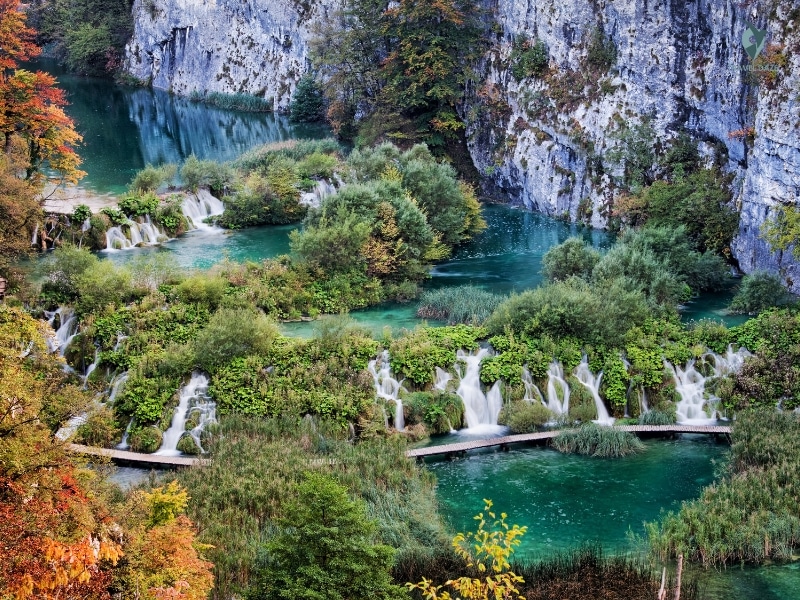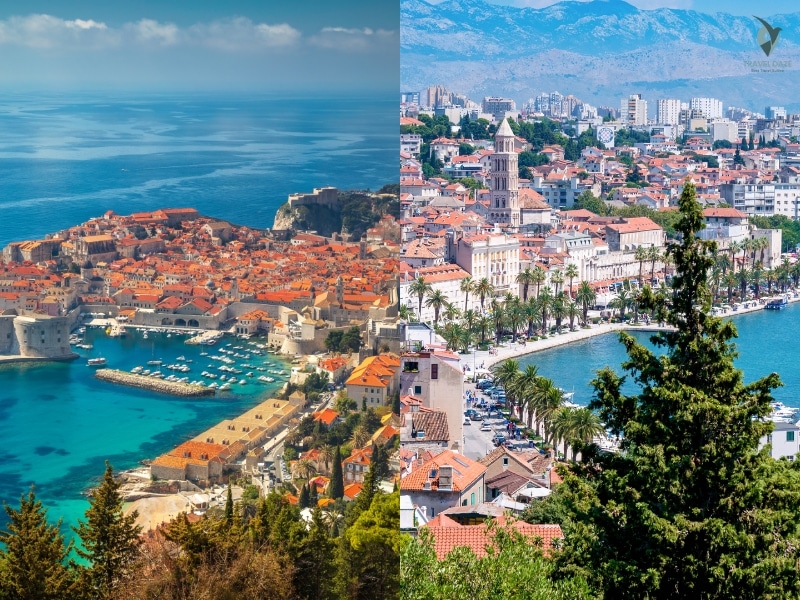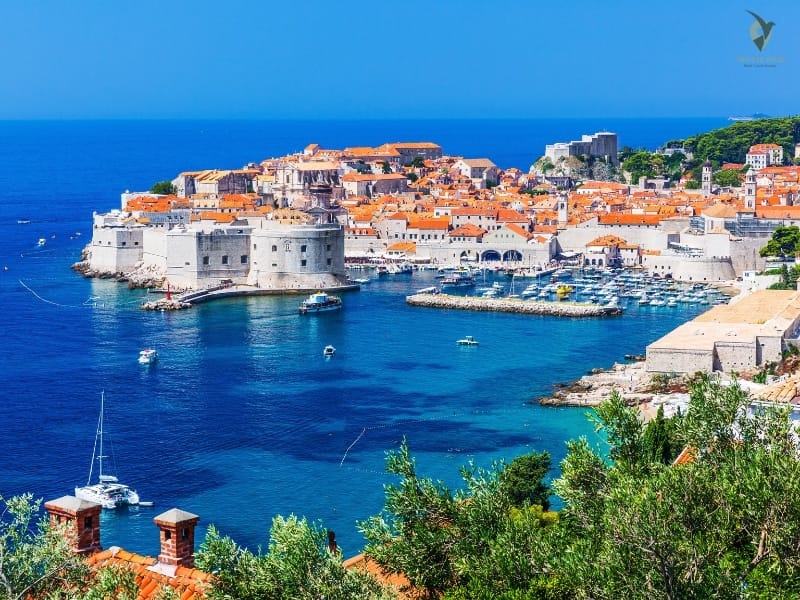Have you ever daydreamed about walking through old alleys, feeling the breeze from the Mediterranean, or enjoying fresh, local food by the sea? If that’s the case, you’re not the only one. When I started my Adriatic adventure, my solo travel in Croatia turned out to be an unforgettable trip full of beautiful scenery and friendly people. This 7-day Croatia travel guide blends historical exploration, relaxing on the beach, and delicious food treats into one unforgettable experience. From wandering the cobblestone streets of Dubrovnik to soaking in the crystal-clear waters of Hvar, every moment felt like stepping into a postcard. For those wondering what to wear in Croatia, lightweight, breathable clothing is a must during the summer months, along with comfortable walking shoes for those charming yet uneven streets. Don’t forget a stylish hat and sunglasses to complete your look while protecting yourself from the Mediterranean sun!
Table of Contents
ToggleImagine starting your day in Split, where Roman ruins narrate tales of a bygone era, and concluding it with a sunset amidst the centuries-old walls of Dubrovnik. Every city I visited along the coast of Croatia had its own history, culture, and natural beauty. Whether you’re traveling alone or with friends and family, this plan aims to provide you with a comprehensive and enriching experience of one of Europe’s hidden gems.
Over seven days, I’ll show you Croatia’s most captivating sights, from Split’s architecture to Dubrovnik’s old walls. Take in the Mediterranean lifestyle by exploring charming towns, unwinding on stunning beaches, and savoring delectable local cuisine. Are you ready for a trip? Let’s go deep into Croatia.
Day 1: Exploring Split
My journey began in Split, a beautiful city known for its long history and lively culture. The blend of old buildings and modern life in Split’s old town immediately drew me in.
Split’s historical landmarks
The first stop was at the famous Diocletian’s Palace, a UNESCO World Heritage site. This is where Roman history remains very much alive. As I walked through its winding streets and secret courtyards, I felt like I had gone back in time. I was amazed by the complex and grand architecture and structures that showed how deep Split’s history goes.
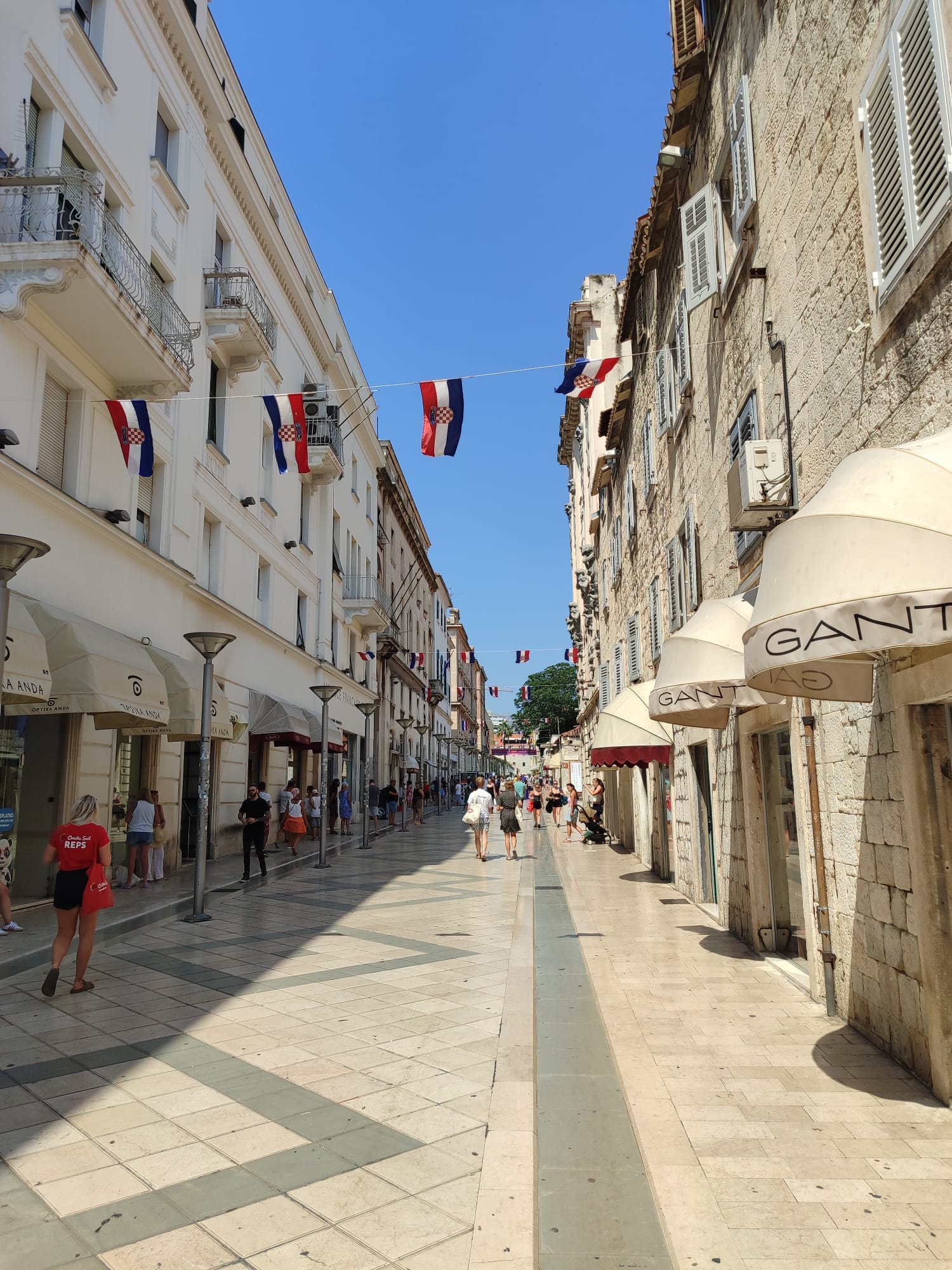
The Waterfront and Riva Promenade
I went to the beautiful Riva Promenade after learning about the history. It’s great to take it easy and enjoy the view of the Adriatic Sea from this busy waterfront. The atmosphere was easygoing and friendly, with palm trees swaying in the wind and people walking slowly by. In this spot, you can enjoy a coffee or gelato while taking in the view of the city.
Dining at Local Spots
It’s not possible to visit Split without trying some Croatian food. I went to a charming konoba and ate traditional dishes like black risotto and seafood caught right in the Adriatic Sea. These regional specialties, along with the friendly service, made for a memorable meal.
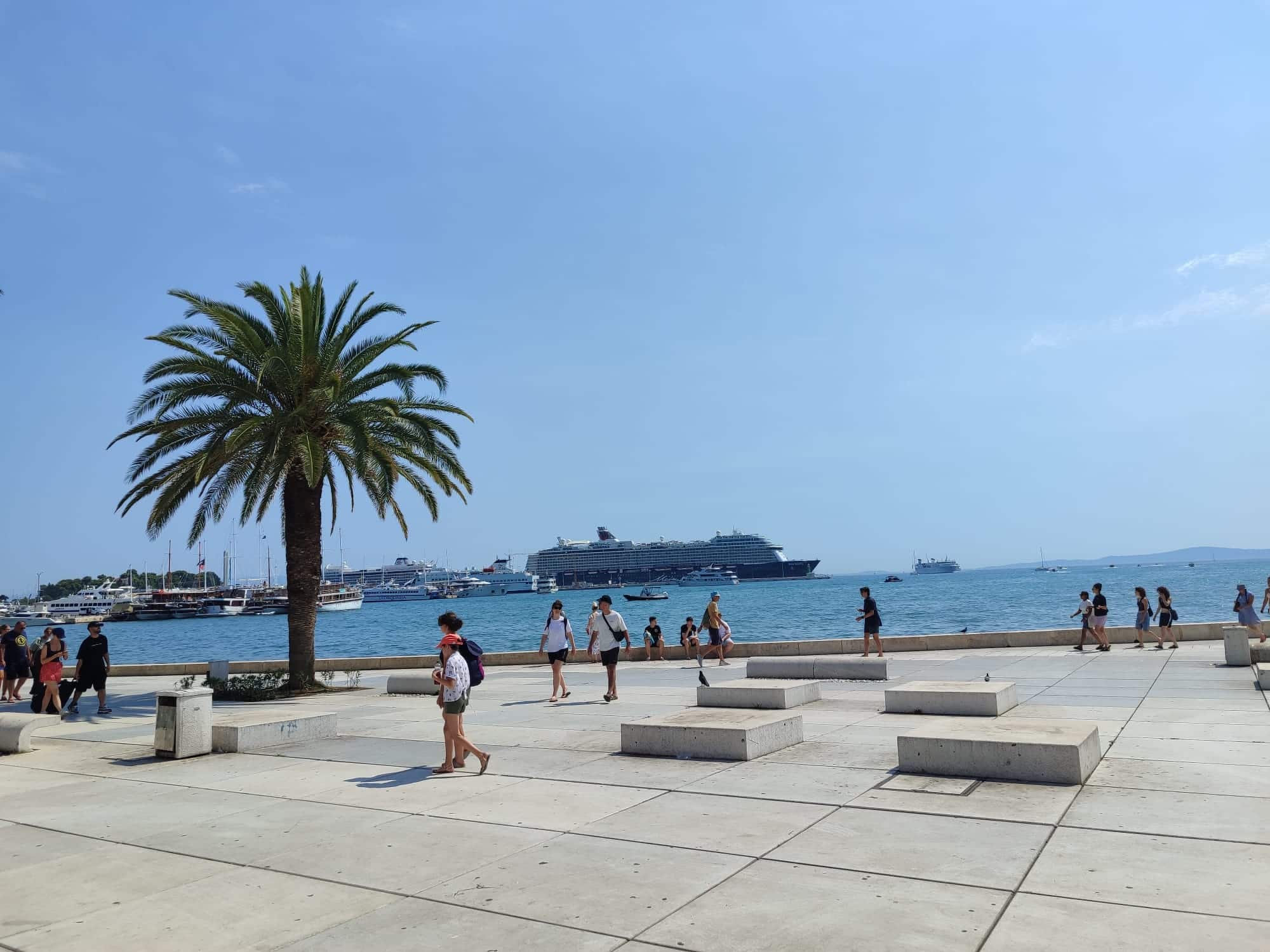
Day 2: Split to Trogir
After taking in the beauty of Split, it’s time to go to Trogir, a charming town. It’s not far to get to Trogir, which has a beautiful mix of Romanesque and Renaissance architecture. Trogir’s old town, a UNESCO World Heritage site, brims with historical treasures awaiting discovery.
Trogir’s historic sites
Begin your journey by admiring the stunning Trogir Cathedral, also known as the Cathedral of St. Lawrence. This famous building is a piece of Croatian history, and the views from its bell tower are breathtaking. The Portal of Master Radovan is a masterpiece of Romanesque art that you should not miss.
Next, visit the Kamerlengo Fortress, which is a 15th-century fortress with a view of the town and the Adriatic Sea. It’s a wonderful place to learn about Trogir’s history and picture the many centuries of events that took place inside its walls.

Strolling through Old Town
In Trogir’s old town, the narrow, cobblestone streets tell you something about the city’s rich history at every turn. Charming squares, old buildings, and secret alleys reveal the town’s historical significance. Take a moment to enjoy the fascinating mix of Romanesque, Gothic, Renaissance, and Baroque styles that make up the buildings.
At the end of the day, go back to Kaštel Novi for the night and think about how interesting Trogir is for its mix of art, history, and culture. This beautiful coastal spot is a must-see for anyone interested in Croatian history or UNESCO World Heritage sites.
Day 3: Charming Primošten
Primošten is the perfect place to relax and enjoy local food. This charming town is on the Adriatic Sea coast and has a lot of beautiful scenery and delicious food.
Primošten’s Stunning Beaches
One of the main draws of this destination is its stunning beaches. The crystal-clear waters of Primošten beaches make them ideal for a leisurely day by the sea. Whether you’re basking under the Mediterranean sun or taking a refreshing dip, the Adriatic charm of this locale never fails to impress. Pebble beaches with gentle waves provide a serene backdrop for relaxation or a seaside stroll.
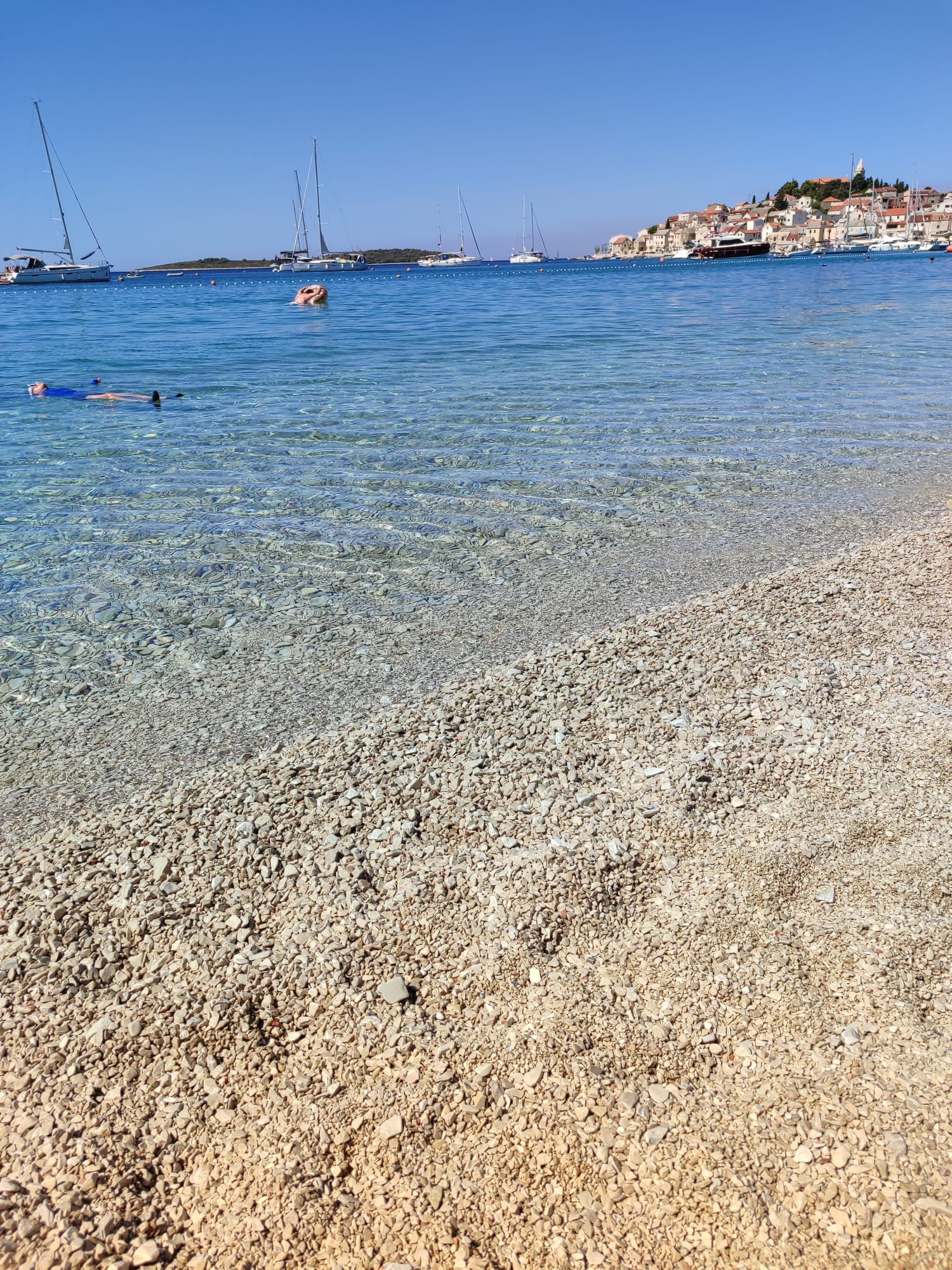
Local cuisine highlights
But it’s not just the beaches; the food here is also a culinary adventure. The restaurants in town serve a wide range of Mediterranean foods that will make your mouth water. Don’t miss the chance to try a perfectly grilled tuna steak, often seasoned with herbs from the area and a drizzle of good olive oil. Primošten’s restaurants have a wide range of dishes, so food lovers will have a great time there.
| Notes: | Describe |
|---|---|
| Primošten Beaches | The pebbled beaches and clear Adriatic water are ideal for swimming and lying out in the sun. |
| Adriatic Charm | The town is a beautiful coastal town with a calm and peaceful vibe. |
| Mediterranean Dishes | Some of the best foods in the area are fresh seafood, olive oil, and wine. |
| Tuna Steak | Try this local dish, perfectly grilled with Mediterranean herbs. |
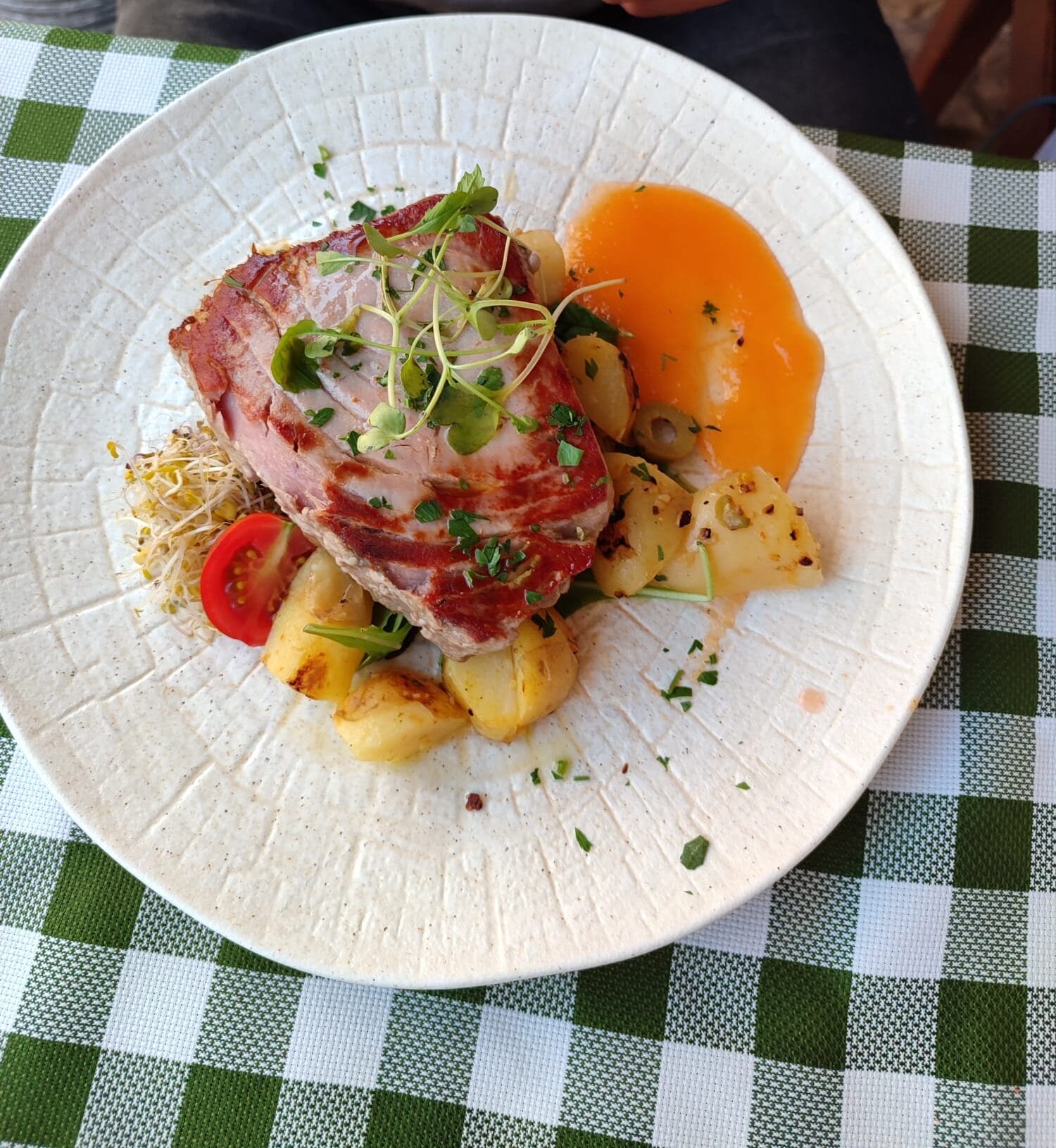
Day 4: Zadar and Its Wonders
When you get to Zadar, you’ll feel like you’re stepping into a place where old history and new creativity work well together. You can’t deny the city’s charm, and its unique attractions and beautiful scenery will draw you in right away.
The Sea Organ
The Zadar Sea Organ is one of Zadar’s most intriguing features. This amazing building combines art and nature, and when the waves hit its underwater pipes, they make beautiful melodies. It’s not just something you hear; it’s also a work of art that you can feel all the way through your body.
Roman and Venetian Ruins
The Roman Forum in Zadar is a wonderful place for history buffs because it has columns and other artifacts from a long time ago. The big, round St. Donatus Church nearby is a magnificent example of early medieval architecture. There are also pieces of Venetian architecture all over the city that will tell a story of Zadar’s complicated past. Each site reveals a different part of history, making you feel like you’ve gone back in time.
Sunset Views from Zadar
When the day is almost over, go to the water to see the most beautiful sunset. It’s straightforward to see why Alfred Hitchcock said Zadar has the world’s best sunset. Seeing the sun go down over the horizon while listening to the Zadar Sea Organ is the best way to really experience this beautiful city.
Day 5: Discovering Brela and Punta Rata
I went to Brela, a beautiful town on the Dalmatian Coast, on the fifth day of my trip through Croatia. Brela was known for its beautiful beaches and landscapes. It was the perfect place to relax and have fun. All day, I lazed around in the sun on the famous Punta Rata Beach and hiked along the many trails that wind through this beautiful coastal area.
Relaxing on Punta Rata Beach
Many people say that Punta Rata Beach is one of the most beautiful beaches in Europe. It was even more beautiful than I thought it would be. The fine sand and clear turquoise water made it a wonderful place to swim and lay out in the sun. Fragrant pine trees surrounded the beach, creating a peaceful atmosphere perfect for relaxation. I couldn’t help but swim a few times in the cool Adriatic Sea, and the nearby café was a wonderful place to get a cold drink and a quick snack.

Exploring Brela’s Trails
After taking it easy in the morning, I chose to check out some of Brela’s well-marked hiking trails. These trails took me through dense pine forests, olive groves, and the rough Dalmatian Coast. The views were breathtaking.
My favorite route led to Brela’s old village. From there, I could see traditional stone houses and a wide view of the coast. The hike was not too hard, so most fitness levels could do it, and it still made me feel satisfied to have finished.
Day 6: Makarska Riviera Adventures
The Makarska Riviera’s beautiful blue waters and dramatic mountains in the background took my breath away.
I chose to try out the different water sports that are available along the Makarska Riviera in the morning. I had a great time snorkeling, jet skiing, and windsurfing for hours. The clear water here is ideal for these activities, and the local instructors were very helpful, making sure everyone had a fun and safe time.
After an exciting morning, I took a slow walk along the coast and found hidden coves that were perfect for a moment of peace and quiet. If you want to get away from the crowds at the beaches, these hidden gems are perfect.
By afternoon, I had gone to one of the busy coastal towns along the Riviera. There are adorable cafes, busy markets, and friendly people in every town who are delighted to talk about their rich cultural history. The mountains added to the natural beauty of the area, making each town look like it belonged on a postcard.
To end my day, I ate some tasty seafood from the area while watching the sun go down. I loved the fresh ingredients and traditional recipes; they were the perfect way to end my trip along the Makarska Riviera.
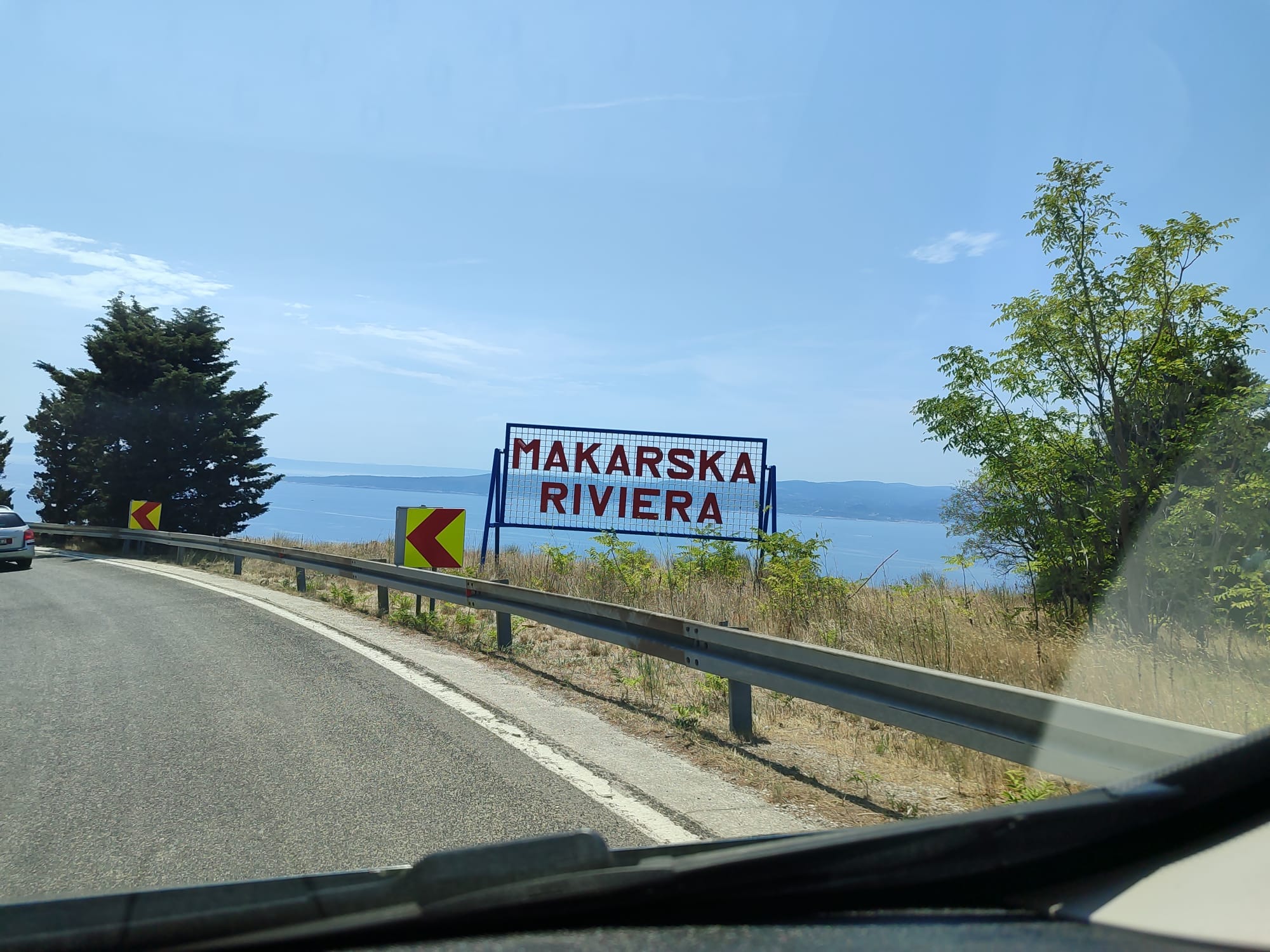
Day 7: Concluding Dubrovnik
The final day of my Croatian adventure brought me to the mesmerizing Dubrovnik, also known as the ‘Pearl of the Adriatic.’ My first stop was the iconic City Walls tour. Walking these ancient walls offered breathtaking panoramic views of the Adriatic Sea and a unique perspective of Dubrovnik’s Old Town. Each step along the City Walls tour felt like a journey through time, bringing the city’s rich history to life. As I continued exploring, I marveled at the stunning terracotta rooftops and the intricate architecture that told stories of resilience and culture. The gentle sea breeze and the vibrant energy of the city made it an unforgettable experience, leaving me inspired to plan my next getaway. Perhaps a 3day itinerary for Nashville is in order to experience a completely different yet equally captivating destination.
Walking the Ancient City Walls
Walking the ancient city walls wasn’t just about stunning views; it was also a deep dive into history. I could almost hear the echoes of the past, from the days when Dubrovnik was a formidable maritime republic. As a bonus, some sections of the walls are easily recognizable as Game of Thrones filming locations, making the experience even more memorable for fans of the series.
Visiting Lovrijenac Fortress
Next, I visited the terrifying Lovrijenac Fortress, perched high on a cliff. This fortress was an important defensive structure and also had some of the best views of Old Town Dubrovnik. I understood why Game of Thrones used this fortress as a major filming location as soon as I walked through its impressive gates. If you went inside the fortress, it was like going into a different world, full of stories of bravery and mystery.
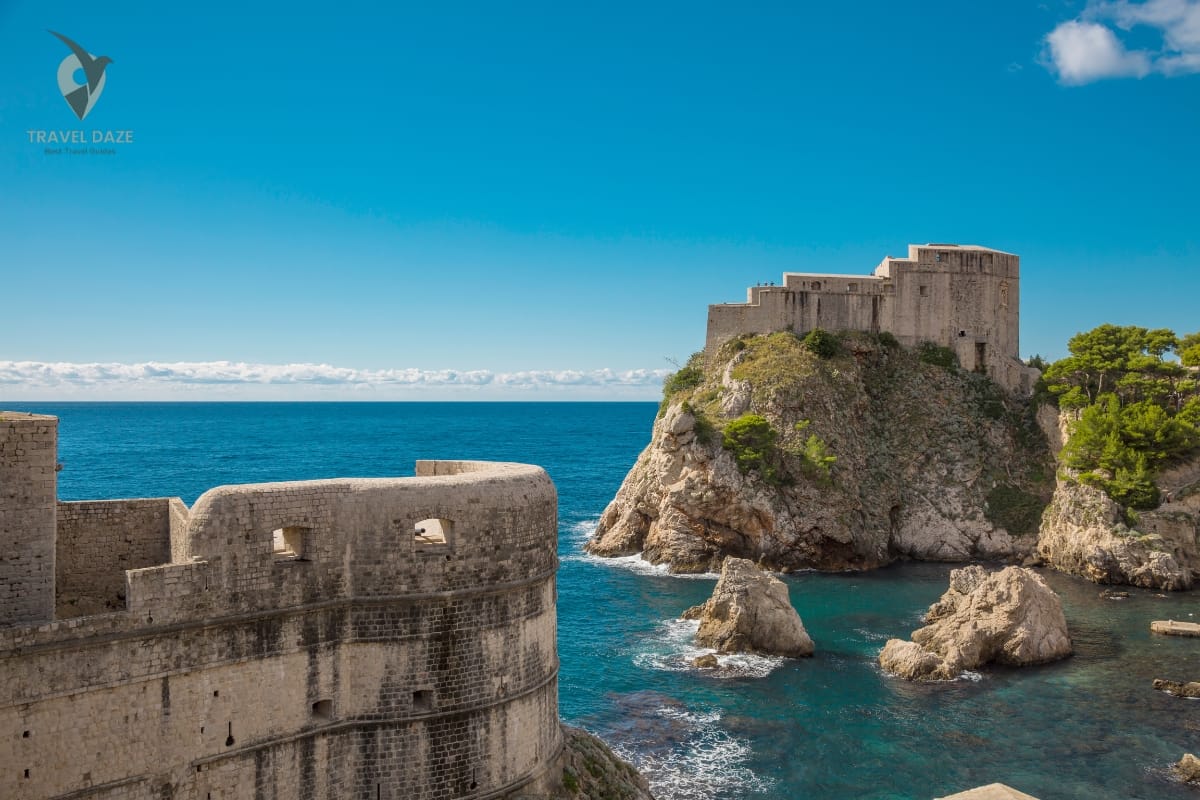
Dining in Dubrovnik’s Old Town
Having dinner in Dubrovnik’s Old Town was a wonderful way to relax after a day of exploring. The smell of seafood from Croatia filled the air, making me want to try the local flavors. I ate delicious things like fresh fish and black risotto. Each bite showed how rich the area’s culinary history is. As a pair with a glass of local wine, the meal perfectly captured the essence of my trip to Dubrovnik.
The following is a quick overview of my final day:
| What to do | Highlights |
|---|---|
| City Walls Tour | Views from above, historical information, and filming locations for Game of Thrones |
| Lovrijenac Fortress | History, beautiful views, and places from Game of Thrones |
| Where to Eat in Old Town | The menu includes seafood, wines from Croatia, and a variety of flavors. |
Tips and Tricks for Planning Your Trip to Croatia
When planning a trip to Croatia, the right time is very important. May, June, September, and October are the best times to go because the weather is lovely and there aren’t as many people there. Remember to bring comfortable shoes for walking, swimsuits, and clothes that let air flow when you pack for Croatia. Don’t forget to bring sunscreen and clothes to protect yourself from the sun in the Adriatic.
Since Croatia’s currency is the euro, it’s a beneficial idea to have some cash on hand for smaller purchases at local markets or cafes. Credit cards are also widely accepted. Many people in tourist areas speak English, which facilitates communication with others.
Here are some more things to think about when planning your trip to Croatia:
- Getting around: Croatia has a large bus system that is reliable and cheap. Another excellent way to see the sights at your own pace is to rent a car.
- Local manners: Being polite is important to the people of Croatia. Express good morning or afternoon with a “dobar dan” and express gratitude with a “hvala.”
- Safety: Croatia is one of the safest places in Europe, but you should always be careful in crowded places.
- Sustainability: Protecting local ecosystems by not throwing trash in the water and thinking about eco-friendly tours can help keep Croatia’s natural beauty.
- Immersion in the culture: To really understand Croatian culture, try to participate in local festivals and activities. You can make your trip more memorable by trying local treats and going to traditional events.
To help you pack for your trip to Croatia, here is a helpful list:
| Item | Describe |
|---|---|
| Clothing | Wear light and airy clothing, swimwear, and comfortable shoes. |
| What You Need | Sunscreen, a hat, sunglasses, and a carry-on water bottle |
| Travel Documents | Travel insurance, a passport, and copies of your reservations |
| Currency | Euros for little things |
| Technology | USB cords, power banks, phones, and adapters |
When you plan ahead, traveling in Croatia can be a lot of fun. Enjoy every moment of your trip through this fascinating country. Learn about the culture, take care of the environment, and embrace it.
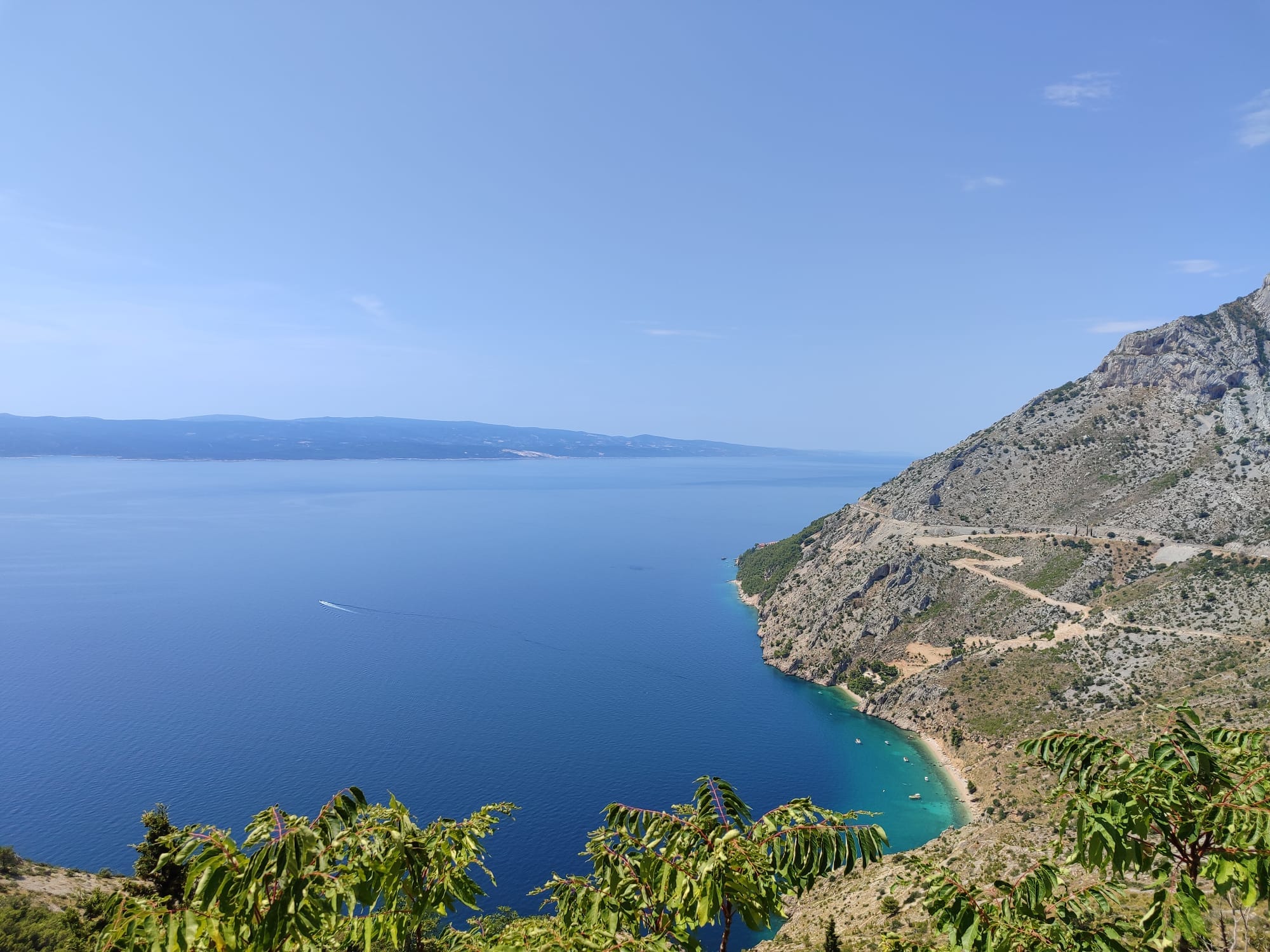
In conclusion
When I think back on this unforgettable trip along the coast of Croatia, I can say with certainty that it was even better than I had hoped. I was amazed by the history, culture, and natural beauty that I learned about every day. From the busy streets of Split to the peaceful shores of Primošten, the best parts of my Croatia itinerary made for an immersive trip for me as a solo traveler.
One thing I will always remember about this trip is how it had both old and new attractions. The ancient Roman ruins and the soothing sounds of the Sea Organ made for a very different sensory experience in Zadar. If you’re planning your trip, don’t miss these recaps of the Croatian coast because they really show what a beautiful place it is.
If you want to travel alone, Croatia is a wonderful place to do it because it is both safe and exciting. The food, ranging from fresh seafood in Brela to fancy meals in Dubrovnik’s Old Town, made the exploration even more enjoyable. Every meal was a chance to learn about the country’s culture and enjoy the delicious food it had to offer.
Overall, this 7-day Croatia itinerary not only gave me a complete look at some of the country’s most interesting places, but it also gave me a lot of time to think about traveling alone. If you’re interested in history, food, or beautiful views, Croatia’s coast is a great place to visit that will stay with you.
Q&A
What currency is used in Croatia?
Croatia’s money is called the Euro. A lot of people use it, and you can easily find ATMs and exchange services in most towns and cities.
How many days should I stay in Split?
I think you should stay in Split for at least two days. This gives you enough time to see historical sites like Diocletian’s Palace, enjoy the lively Riva Promenade, and eat traditional Croatian food at one of the local konobas.
What is the best way to explore Trogir?
On foot is the best way to see Trogir. Walk through the Old Town’s charming streets, see historic sites such as Trogir Cathedral and Kamerlengo Fortress that are on the UNESCO list, and learn about Croatia’s long history.
Are there any famous beaches in Primošten that I should visit?
Yes, “Beach Mala Raduča” and “Velika Raduča”. Take it easy on the charming pebble beaches for a day, and don’t forget to try local dishes like tuna steak at the restaurants by the water.
What makes Zadar’s Sea Organ special?
The Sea Organ in Zadar is a one-of-a-kind piece of architecture that plays music by sea waves. It’s a must-see, along with the Roman and Venetian ruins scattered around the city.
What can I expect when visiting Punta Rata Beach in Brela?
Many people say that Punta Rata Beach is one of the most beautiful places on the Dalmatian Coast. You can lay out in the sun, swim in the clear water, or explore Brela’s hiking trails that run along the pine-lined coast.
What activities are available on the Makarska Riviera?
There are many things to do on the Makarska Riviera, such as water sports, exploring hidden coves, and enjoying the lively coastal towns. There are both exciting and relaxing things to do along this scenic stretch.
What’s the best way to see Dubrovnik’s Old Town?
On foot is the best way to see Dubrovnik’s Old Town. Walk along the old city walls to see stunning views, visit historical sites like Lovrijenac Fortress, and eat delicious Croatian seafood at restaurants in Old Town.
To travel around Croatia, do I need to speak Croatian?
It’s helpful to know a few Croatian phrases, but most people in tourist areas speak English, so you shouldn’t have any trouble getting by.
Any tips for packing for a trip to Croatia?
Bring clothes that are light and comfortable for the warm weather in the Mediterranean. Remember to bring things like sunscreen, a hat, and swimwear. If you want to see historic sites and city streets, you need excellent walking shoes.






